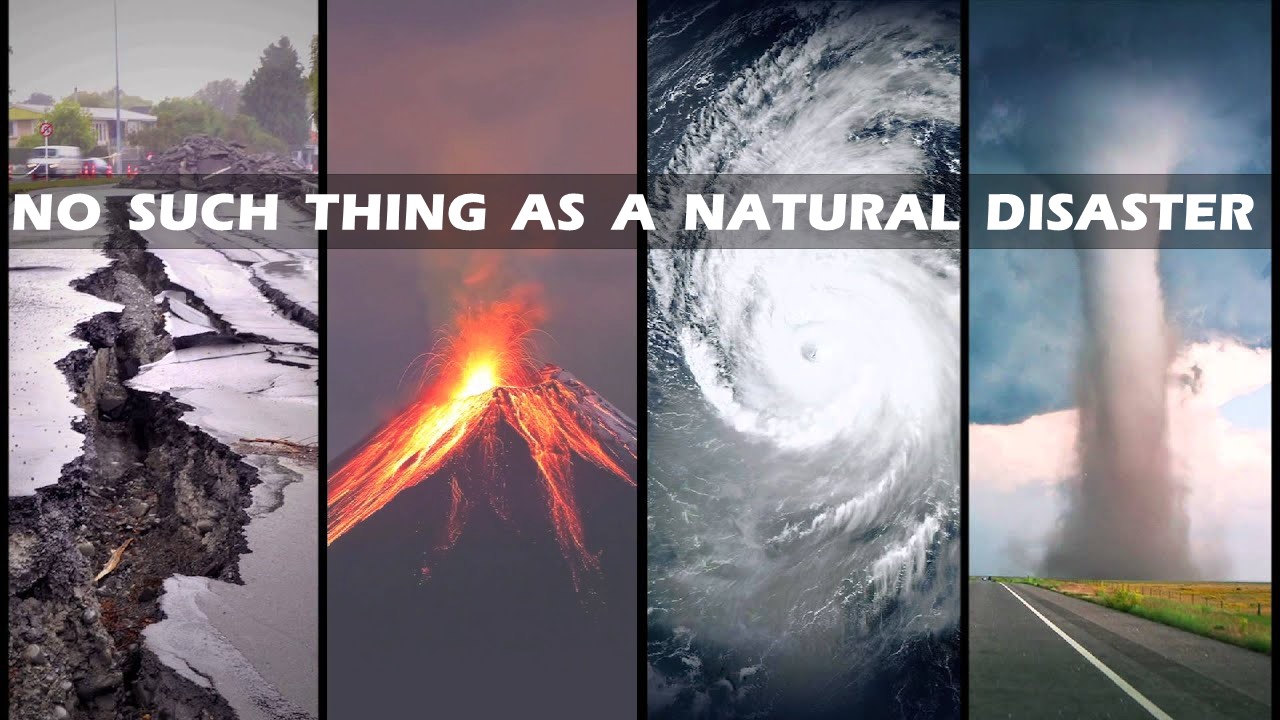How many natural disasters did you see in the news in 2021? The answer is zero. What you likely saw was a natural hazard that resulted in a disaster because of cumulative past and current human actions and decisions. The term “natural disaster” is often misused in the media to describe any severe weather event that causes harm and damage to humans and property, shifting blame to nature.
However, climate disasters are the cumulative consequence of past and present human actions and decisions. They are not natural disasters, nor should we refer to them as such. Using the phrase “natural disaster” absolves the role we, governments and corporations play in causing harm to people and communities, especially low-income.
Who is responsible for a disaster?
The IPPC 2012 image which was modified and re-published in the Natural Hazards journal below, best illustrates this case which highlights the intersection between natural hazards, human exposure, and vulnerability. Climate-related hazards are a natural reaction such as a river expanding under heavy rain or tropical storms forming during summer seasons when the sun heats the ocean’s surfaces. However, a disaster is likely only when these natural hazards intersect with exposure and vulnerability— a consequence of human action, government decisions and lack of corporate accountability.
.PNG)
From developers building homes in floodplains (exposure), politicians not investing in our crumbling infrastructure (vulnerability), industries increasing carbon emissions (climate change), to states’ inequitable allocation of disaster mitigation and recovery resources (risk management) – all these result in greater loss of life and damage. A disaster.
It is not just about semantics. Politicians have leveraged the terminology of “natural disasters” to at minimum avoid culpability and at most gain favor when they helicopter-in and make a disaster declaration to help disaster victims, painting themselves as heroic. The truth is, however, that disasters are a consequence of political, economic, and social inequities and the sooner “natural disasters” are discredited, the sooner advocates can hold accountable those responsible for climate-related disasters.
Disasters and Environmental Justice
Years of natural hazards and disaster research has shown there are inequities in disaster impacts and recovery. Rural and low-income communities are more impacted by disasters and climate change. This is because day-to-day inequities and environmental injustices are exacerbated in times of disasters and persists long after. Therefore, any true relief from disaster must first address underlying inequities, injustices, and basic needs; in order to avoid the next disaster.
Advocates can leverage this knowledge to incorporate disaster resilience into any environmental justice efforts as well as incorporate environmental justice priorities when politicians and outside institutions are attempting to respond to a local disaster. For example, the NAACP created an Action Toolkit for advancing equity in disaster preparedness and recovery by overall investment and development of community resilience and inclusion of environmental justice analysis in recovery planning.
There were zero “natural disasters” in 2021. Rather, we responded to 20 climate-related hazards that resulted in disasters each with losses greater than $1 billion according to the NOAA 2022 report (see the image below). These events include the winter storm in Texas, the heat wave across the Pacific Northwest, and the Derecho storm (in-land hurricane equivalent) which resulted in deaths due to limited infrastructure capacity and community preparedness. Unfortunately, natural hazards will become more common as climate change predictions show more frequent, severe, and varying climates across the globe. The good news is that it does not have to result in more disasters.

It is within our power to respond to natural hazards and avoid disasters by investing in our infrastructure especially in environmental justice communities, developing communities’ resilience, and achieving environmental and climate justice. Climate and environmental justice advocates know climate and weather-related disasters are exacerbated by day-to-day inequities. There is nothing natural about inequities exacerbated by disaster impacts and these can be avoided when we, governments and corporations take action to reduce harm to people and communities, especially low-income.
In the next months, Just Solutions Collective will publish a series of blogs on the intersections of disaster resilience and environmental/climate justice, we will introduce disaster resilience frameworks, showcase community programs that build that resilience, and discuss policies that inhibit or facilitate these efforts, as well as interview leaders at the intersection of disaster resilience and environmental justice. Stay tuned for this important series.
